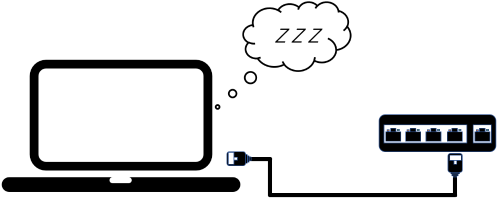様々な"モノ(物)"がインターネットに接続され、情報交換を行う現代社会では、インターネットワーク中に音声・映像・メールなどのデータが無数に飛び交っています。
そのような中で、送信機器と受信機器の間でパケットの取りこぼしが起きないよう、様々な約束が存在します。今回は、パケットとパケットの送信間隔についてお話しします。
フレームとフレームの送信間隔はどのように決められるのか
EthernetのFrame構成
Frame Formatには、『DIX Ethernet(EthernetⅡ) Frame』と『IEEE802.3 Frame』が存在します。
現在、最も一般的に利用されているFrameは『DIX Ethernet(EthernetⅡ) Frame』で、Ethernet Frameといった場合、大抵の場合は『DIX Ethernet(EthernetⅡ) Frame』
のことを指します。各Frameの違いは、Preambleの後に『SFD』が追加されている点と『EtherType』が「Size/EtherType」となっている点ですが、ほとんどのネットワーク機器はどちらの形式でも認識することが可能ですので、混在しても問題ありません。
1つのEthernet Frameには、様々な情報が規定通りに格納されています。LAN Cable上を流れるEthernet Frameは下図のような形となり、実際のデータは宛先MACアドレス
からFCSの最後まで指します。その値は64byte~1518byteまでの可変値となり、Ethernet Frameのサイズは“バイト数”で表記されます。

また、データを送っていない状態として、Preamble・SFD・IFG があります。
- Preamble
Ethernet Frameの受信側に「これからデータが送られて来ますよ!」と知らせ、同期を取るタイミングを与えるためにEthernet Frameの
先頭に付加される、「101010…1010」という 56Bit(7octet)のBit列のことです。
- SFD(Start Frame Delimiter)
Ethernet Frameの最初のフィールドであるPreambleの終わりと、Ethernet Frameの始まりを示すために付加される、「01010111」という
8Bit(1octet)のBit列のことです。
- IFG(Interframe Gap)
Ethernet Frameから次のEthernet Frameを送るまでの間隔のことです。最小値が決められており、その値は12Byte(96Bit)です。
各通信速度における具体的な時間は、以下の通りとなります。
10Mbps Ethernet 9.6 μsec
100Mbps Ethernet 0.96 μsec
1Gbps Ethernet 96 nsec
10Gbps Ethernet 9.6 nsec
IFGが必要な理由1 ~ Frame Recovery Time ~
最近のネットワーク機器は、省電力機能を備えたモデルが低価格で入手可能です。
節電対策として、信号を受信していないときや未使用LANポートの電力供給を制限することで、低消費電力モード(Sleep Mode)を実現します。
この状態から通常の通信状態に復帰するため、Ethernet Frameの受信機側ではClockを回復し、Frame受信の準備をする時間にIFGが使用されます。
また、Ethernet Frameが次々と送信されてくる場合、受信側は次のFrameの受け入れ準備をするために ”回復時間” が必要です。
IFGにより、受信機側のFrame受け入れ態勢を整えるための時間が確保されます。

IFGが必要な理由2 ~ Ethernet通信は非同期通信 ~
Ethernet通信はSONET/SDH等とは異なり、データの送信側と受信側のクロックタイミングを合わせない、非同期の通信規格です。
非同期通信の場合、データの送信側と受信側はそれぞれのクロックで動作しているため、クロック偏差(クロックの誤差)が生じます。
IEEE802.3u のFast Ethernetでは、125MHzのクロックで±100ppmまでの誤差を許容していますので、隣り合う機器の間で最大±200ppmの誤差が生じます。
このクロック偏差がある状態でも、受信機器が正しくデータを受信できるようにIFGで調整します。
Microchip社 Ethernet関連製品情報
Microchip社のEthernet関連製品情報は、以下をクリックください。
お問い合わせ
本記事に関してご質問などありましたら、以下より問い合わせください。
Microchip メーカー情報Topへ
Microchip メーカー情報Topページへ戻りたい方は、以下をクリックください。
